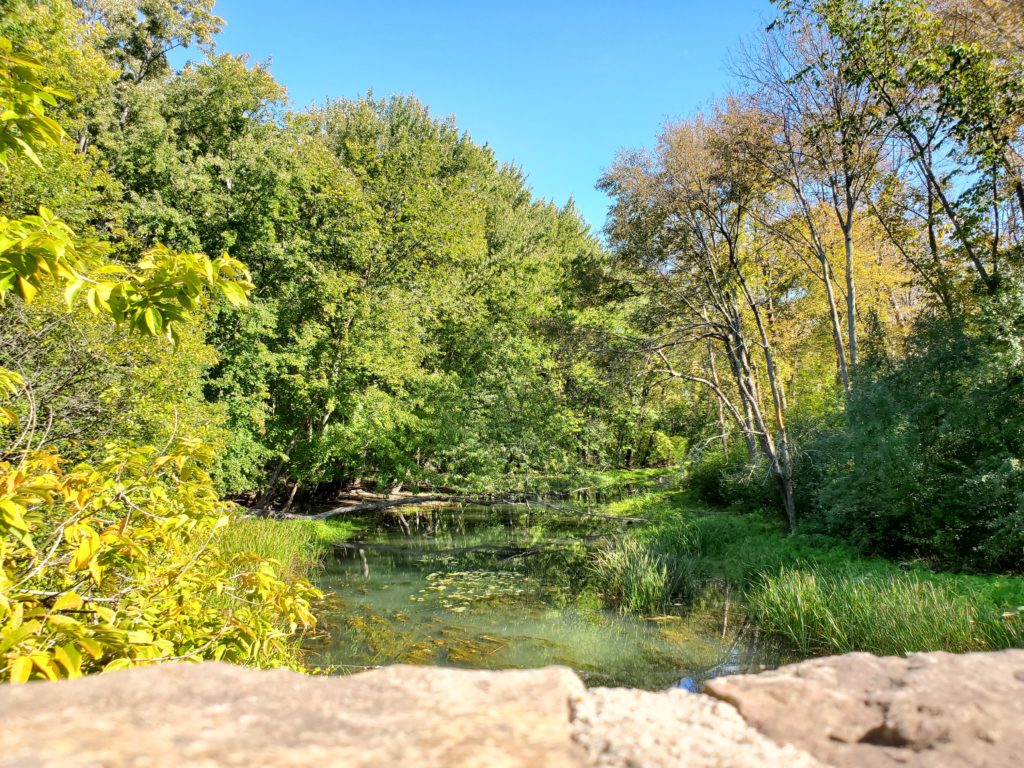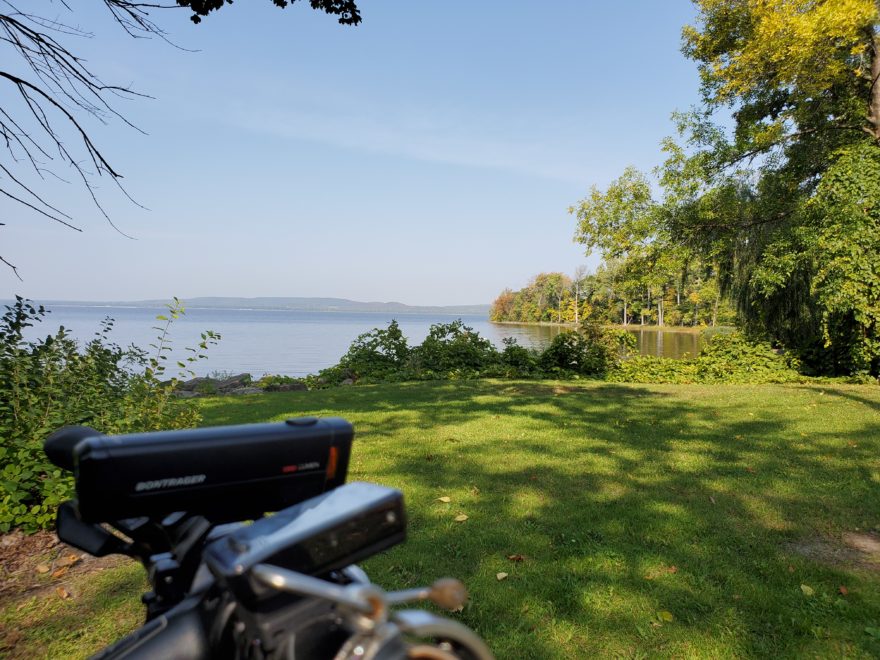I’m feeling very happy with myself today. I just realized that I’ve ridden just over 350 km on my bike since Friday before last. That’s about 218 miles for my American friends. Pedaling past scenic farms and through forests, riding along our gorgeous Montreal Island waterfronts. This is quite a lot of cycling for me, in a two-week period!
My regular cycling route runs alongside a stream, a river, and then a lake; each with their own unique natural environments and wildlife. Which is great, given that I have to stop often during each ride, because of my rare disease which causes full-body fatigue as well as localized symptoms in my right hand and arm. At each stop, I take the opportunity to truly appreciate the beauty of nature.
Not only the forest and waterfront views, but also the local wildlife. I ride through a mix of suburban, urban, and wild areas, and in the latter we have a good variety of creatures; beavers, chipmunks, coyotes, deer, egrets, groundhogs, kingfishers, rabbits, red foxes, (great blue and night) herons, muskrats, (brown, garter, and milk) snakes, (red and grey) squirrels, turkeys, turkey vultures, waterfowl, and many more.
There’s also designated and protected migratory bird pathway along a good portion of my route as well, so the types of winged wildlife here can change from one week to the next; there’s always something to see, if you stop to look and listen!
This 350 km in two weeks is probably more of a big deal for me than it is for most other people, in large part because I remember being told – when I was first diagnosed with my rare autoimmune and neuro-inflammatory disease – that I “would be unlikely to ever ride a bicycle again”.
It’s often physically challenging, and painful, for me to be on my bike. My bizarre cycling style involves mostly having only my left hand on the handlebars, due to Complex Regional Pain Syndrome (CRPS) in my right hand and arm.
Since 2016 I’ve been living with wicked neuropathic and joint pain there, along with all the other symptoms CRPS has brought to my life; often-crushing autoimmune fatigue, a mild cognitive impairment, feelings of electric shocks running down my arm, skin sensitivity, and much more.
On each ride I feel either some or all of these different symptoms. At the same time, though, cycling brings me joy, serenity, and well-being. The same can be said of the other outdoor sports that I’ve adored since before I met my husband. Alpine hiking, snowshoeing, even birdwatching.
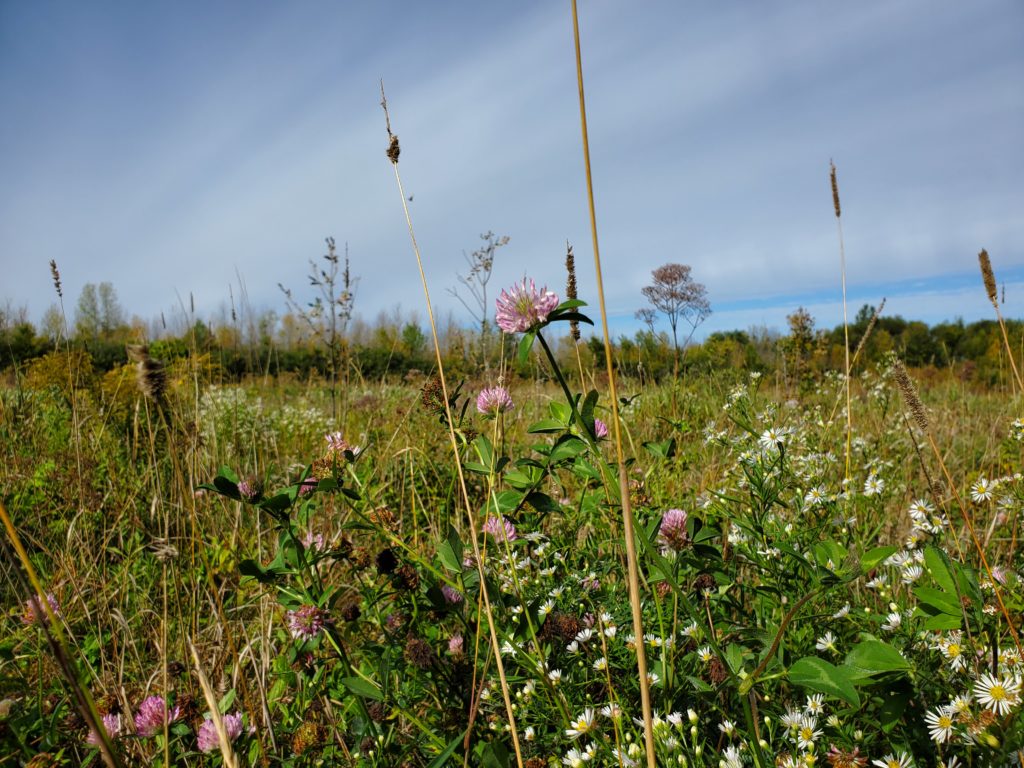
I also love canoeing and cross-country skiing, but haven’t yet found ways to do these safely using only my left hand. That doesn’t mean that I’ve given up on these sports; I bought my husband a canoe for one of his milestone birthdays almost 20 years ago, and we still have it!
Something I realized early on with CRPS is that as rough as it is to do at least some of my beloved outdoor sports with this disease, it would be even rougher on me not to do them. Not only for the aspect of riding in nature, of looking for wildlife on each ride, but the exercise itself.
Although healthcare professionals used to believe that rest – not being physically active – was the best approach for many chronic pain conditions, research has shown that view to be false. Earlier this year, for example, the International Association for the Study of Pain (IASP) published a Fact Sheet on physical activity for healthcare professionals:
Multiple guidelines advocate physical activity and exercise as effective treatment interventions to reduce pain and fatigue, and improve patients’ function in a wide variety of chronic pain conditions”(1)
This Fact Sheet drew on recent research, much of which had been included in a 2017 review of medical studies on exercise and chronic pain. That evidence review stated that:
Physical activity and exercise can be adapted for an individual, and is something people can do to help themselves…
Exercise may have specific benefits in reducing the severity of chronic pain, as well as more general benefits associated with improved overall physical and mental health, and physical functioning of people with chronic pain”.(2)
That first line speaks to me; this is something that I can do for myself. These benefits of exercise – not only for my rare disease and chronic pain symptoms, but for my overall health and well-being – prove that I can take some control of control of my life back.
One of the more personal benefits of my cycling, and other outdoor sports, is that it reminds me – on regular basis – that I’m still ‘me’ despite CRPS. The value of that is incalculable to my well-being, yet it remains difficult to explain even to my multidisciplinary pain management team.
My loved ones understand this, because they know me as an outdoor sports enthusiast; it’s who I am. It has always been as though nature calls to me, as far back into my childhood as I can recall. I’m certain that I have my dad to thank for that, with our nightly forest walks, long bike rides, canoe treks, and hours spent swimming across lakes and in rivers!
In college, what do you think my choices were for four mandatory physical education courses? Bicycle camping, with an overnight camping excursion as part of the course, and Rock Climbing I and II; introductory and advanced. I’d planned to take the Introduction to Kayaking, but it didn’t fit within my course schedule; the only course taught outdoors which fit into my class schedule was Archery, so I took that ‘-)
Trying to explain this need to be outside, and exercising, to a less-active physician, physiotherapist, or other healthcare professional, though, has often been a challenge. They’d often ask me, prior to the COVID-19 pandemic, “wouldn’t it be safer to exercise indoors?” Safer, perhaps, but much less fulfilling. There wouldn’t be the sheer joy of being out in nature; of zipping down a hill with the wind in your face, of glimpsing a deer in the forest, or exploring. Of just being… me.
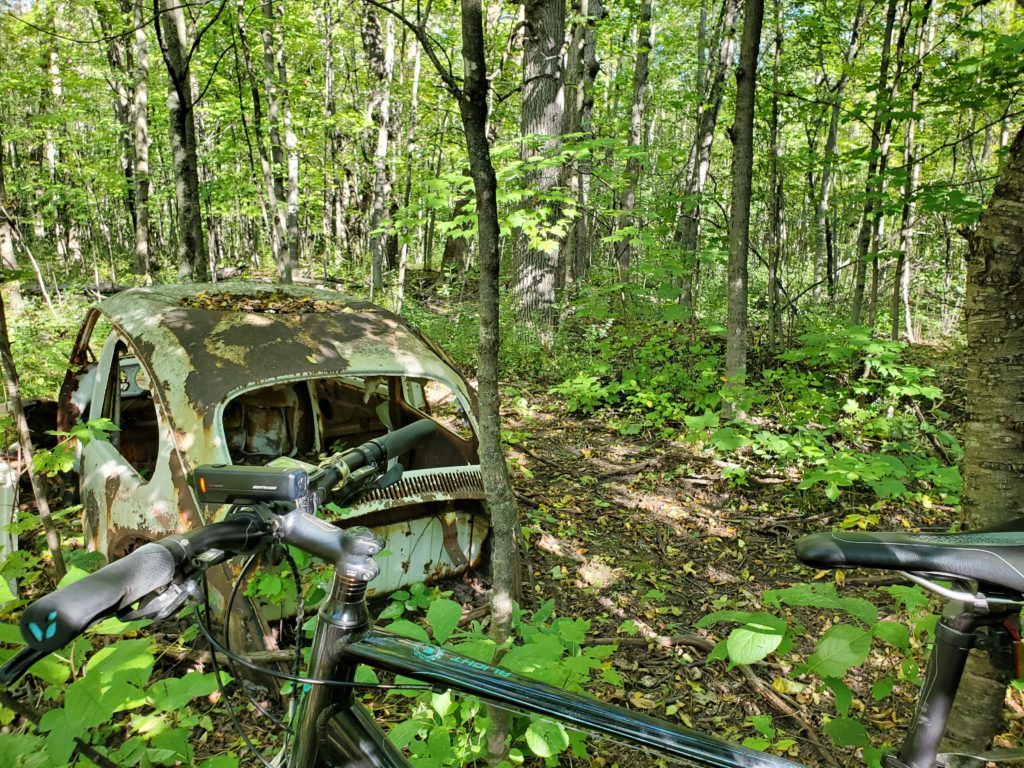
Which brings me to a medical research article published this year on how being exposed to nature, to greenspaces, can lower the impact of pain on people’s lives:
Drawing on evidence from neuroscience, physiology, microbiology, and psychology, we articulate how and why exposure to greenspaces could improve pain outcomes and reduce the high global burden of pain.
Greenspace exposure potentially provides opportunities to benefit from known or proposed health-enhancing components of nature, such as environmental microbiomes, phytoncides, negative air ions, sunlight, and the sights and sounds of nature itself”(3)
Greenspace, of course, is another word for nature; the authors of this article are all from Australian, so might use slightly different terminology than we do here in North America; the University of Adelaide’s School of Allied Health Science and Practice, School of Biological Sciences, and School of Public Health; the College of Science and Engineering of Flinders University of South Australia; and the Healthy Urban Microbiome Initiative (HUMI), which has been endorsed by the United Nations Secretariat for the Convention on Biological Diversity.
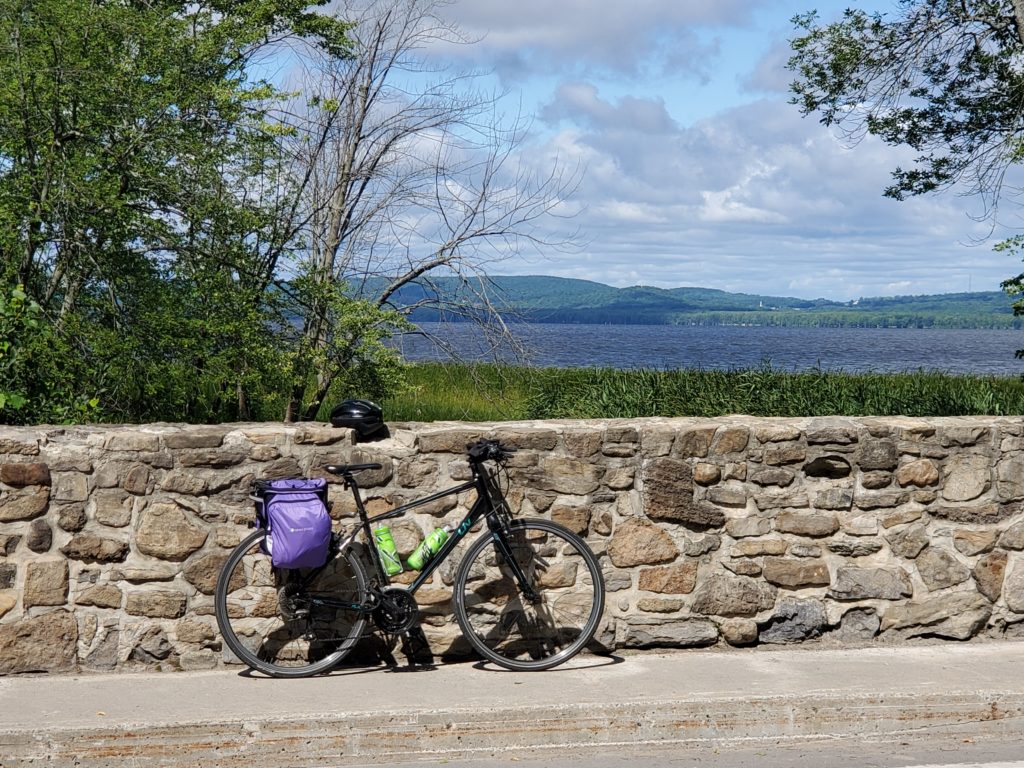
This study was written during the current COVID-19 pandemic, so takes into account not only the pre-existing lack of access to appropriate – multidisciplinary – chronic pain management clinics, but also the further reductions in access to medical care and other therapies brought about by the pandemic itself:
One of the advantages of greenspace exposure as an intervention for pain, particularly chronic pain, is that it is not reliant on medical intervention, and could be implemented while on waiting lists for specialist appointments – a particularly important consideration in the socially isolating conditions of a pandemic, with elective surgery and pain clinics closed down.
It can take years for patients to gain access to these services, during which time their nervous systems change and the burden of their pain increases.”(3)
To be clear, this article is advocating for patients to be ‘out in nature’ as a therapy for pain; that’s what is meant by “greenspace exposure as an intervention for pain”.(3)
After almost five years of having to convince my various specialists and other healthcare providers that there are two distinct ways in which my outdoor sports positively impact my chronic pain condition (and my overall health and well-being), I finally have the research proof to back that up!
What are those two distinct pathways by which cycling, and other outdoor sports, improve my pain symptoms and my well-being? The aerobic exercise (often simply called ‘cardio’ in gyms!), and simply being out in nature; forests, meadows, waterfront parks, pretty much any place with trees or an abundance of plant life.
And guess what? It’s usually free to get outside, to find a park to walk through or to roll through if you use a wheelchair. Whether or not you live with chronic pain or like to exercise, you can still enjoy many of these benefits by simply enjoying the beauty of nature.
If chronic pain is part of your life, here’s the take-away message from today’s blog post:
“exposure to greenspaces is likely to reduce pain, particularly chronic pain.”(3)
As always, thanks so much for stopping by this 100% non-commercial blog. I’m not selling anything, nor recommending any particular product, therapy or treatment. If you find any of the posts helpful, or would like to comment, please reach out over on Instagram or Twitter. My CRPS has resulted in a mild cognitive impairment, which made it impossible for me to manage the comments here on the blog; so I’ve had to disable the comments function.
Keep safe and keep well. And maybe spend more time outdoors! September is Pain Awareness Month, a good time to put some of this new pain research knowledge to work for yourself or for your loved ones.
References
(1) Reis, F and Fullen BM. Physical Activity for Pain Prevention. Fact Sheet: 2020 Global Year for the Prevention of Pain. International Association for the Study of Pain (IASP). ePublished 2020. Online:
https://www.iasp-pain.org/GlobalYear
(2) Geneen LJ, Moore RA, Clarke C, Martin D, Colvin LA, Smith BH. Physical activity and exercise for chronic pain in adults: an overview of Cochrane Reviews. Cochrane Database Syst Rev. 2017;4(4):CD011279. Published 2017 Apr 24. doi:10.1002/14651858.CD011279.pub3. Online:
https://www.cochranelibrary.com/cdsr/doi/10.1002/14651858.CD011279.pub3/full
(3) Stanhope J, Breed MF, Weinstein P. Exposure to greenspaces could reduce the high global burden of pain. Environ Res. 2020;187:109641. doi:10.1016/j.envres.2020.109641. Online:
https://www.sciencedirect.com/science/article/pii/S001393512030534X?via%3Dihub
